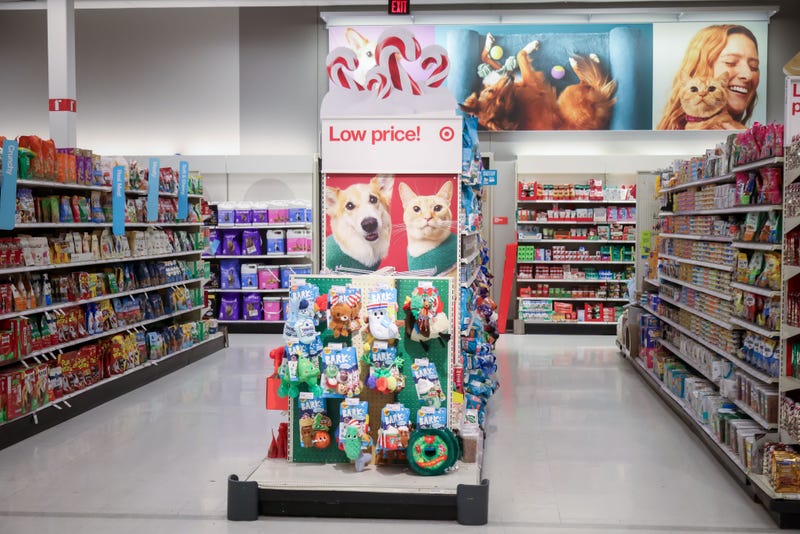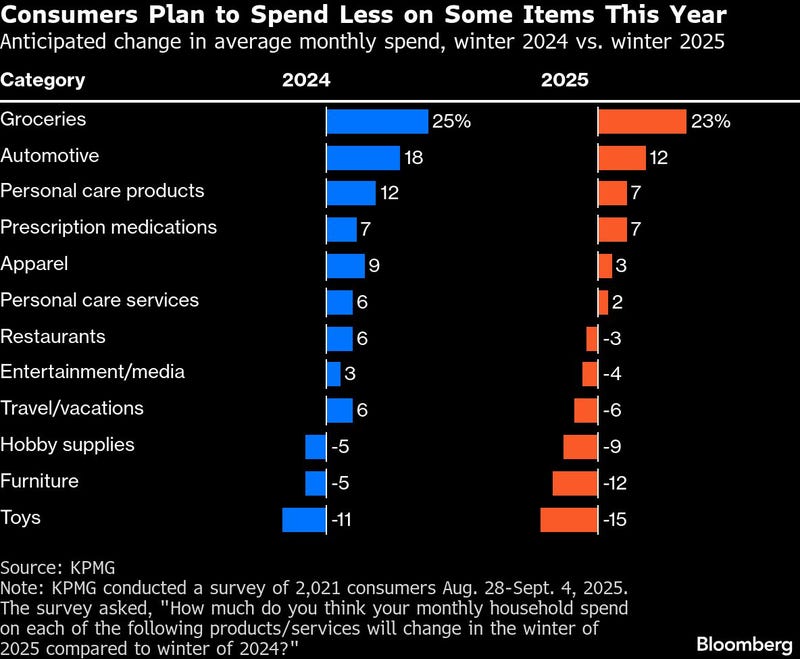
NEW YORK (BLOOMBERG) — On past Black Fridays, Eilise Fisher has fired up her laptop and searched for deals on big-ticket items: A reduced Le Creuset Dutch oven, or a new TV at 30% off. This year, her shopping cart looks a little different — Fisher is planning to stock up on three 40-pound bags of Purina kibble, the favorite snack of her three rescue dogs: Luke, Leia and Yoda.
Fisher, a 47-year-old government project manager living in Flagstaff, Arizona, has also created a color-coded spreadsheet of her potential purchases, detailing the product’s original price and any available discounts. It’s a step beyond her usual wish list.


As US consumers remain anxious about job security and the cost of living, some, like Fisher, are using seasonal sales — a period usually geared toward gift buying and the occasional personal indulgence — to restock on essentials. They’re also taking a more cautious approach to shopping; sticking to pre-planned purchases and buying gift cards instead of potentially unwanted presents.
It’s a trend that’s been gathering momentum in recent months. Household items like dish soap and dishwasher rinse aid were among bestsellers during an Amazon Prime sale this summer. And about 64% of shoppers said they planned to buy on-sale necessities during recent October discounts, according to a report from consultancy Deloitte. That’s up from 58% who said the same in 2024.
“As we saw during this summer’s back-to-school shopping season, consumers are keen to take advantage of holiday spending events to also purchase everyday goods,” said Mark Mathews, chief economist and executive director of research at the National Retail Federation.
The NRF expects consumer spending per person on gifts, food and other seasonal items over the holiday period to dip slightly from last year’s record, with some 85% of shoppers anticipating higher prices because of tariffs. Nearly two-thirds of people are waiting for this weekend and deep Thanksgiving discounts to do most of their holiday shopping, the NRF found.

Megan Hamand, a 37-year old financial statement auditor in San Diego, usually adds her favorite $40 Bobbi Brown mascara and $28 Coola sunscreen to her cart on Black Friday. She’s sticking with her favorites this year, but plans to buy several of each to avoid paying full price when she needs to restock. It’s a tactic she first adopted last year on various purchases, when the prospect of steep tariffs on imported goods started feeling like more of a reality.
“It’s hard to not feel like things are less affordable,” Hamand said. “I don’t really have any incentive to buy anything at full price.”
She’s also planning to buy her husband an external hard drive that he’s been wanting, something she said she probably wouldn’t have purchased on a previous Black Friday.
“Being more prepared instead of impulsive with shopping is probably the better bet,” she said.
A combination of high prices and mounting job worries from a rash of recent layoff announcements has Americans feeling the worst about their personal finances since 2009, data from the University of Michigan show. The most recent government data available showed retail sales lost momentum in September, with declines in spending at businesses including electronics and appliance stores, as well as sporting-goods retailers and book stores.
There is also a growing gap between higher earners and low- and middle-income households. Wealthy consumers in the top 10% of income distribution accounted for nearly half of total spending in the second quarter, according to an analysis by Moody’s Analytics, while lower-income groups have grown more cautious about spending.
David Tinsley, senior economist at the Bank of America Institute, said that while he expects overall consumer spending to remain strong during the holiday season, figures could appear higher due to consumers paying more for goods rather than actually buying more.
Some 62% of shoppers are experiencing financial strain, according to a holiday shopping survey conducted by Bank of America. Of those respondents, 87% said they plan to shop at discount stores due to rising prices.
“More consumers are showing budget consciousness and choosiness in how they spend, which means more necessities over discretionary,” said Diane Swonk, chief economist at KPMG. “Any time that you can get deals, you’ll lean into them.”
Swonk said that the consultancy firm’s surveys have shown that people don’t expect to buy as many gifts this season, and are much more interested in receiving cash and gift cards than discretionary items.
That makes sense to Joel Waldfogel, a professor at the University of Minnesota’s Carlson School of Management, who said pulling back on presents — or gifting essentials instead of luxury items — can be a way of feeling like you’re not wasting household finances.
“Getting socks or underwear under the tree is disappointing, but it’s a safe expenditure,” Waldfogel said.
